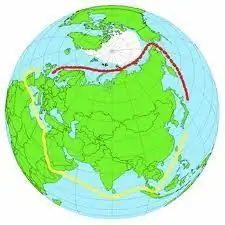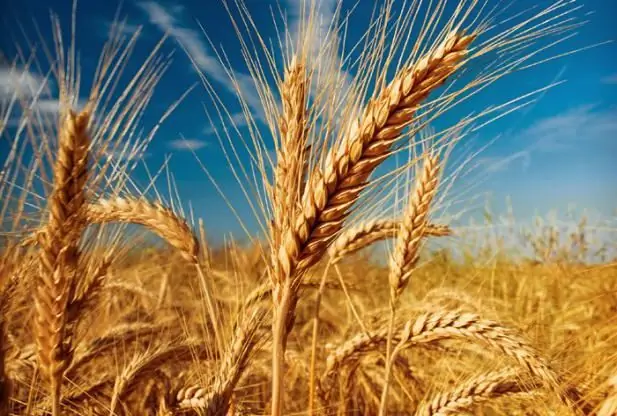2026 Author: Howard Calhoun | [email protected]. Last modified: 2025-06-01 07:12:56
Field crops, both in domestic and world agriculture, have one of the leading values. They occupy most of the agricultural area and provide the main products. Field farming is the cultivation of about 90 plant species, which provide a significant part of human nutrition, as well as animal feed, raw materials for further processing. As a branch of crop production, field farming is part of the economic system of almost every agricultural enterprise. This is one of the key links in the economy of most countries.

What is field farming?
Field farming is the main branch of agriculture, responsible for the production of field products, mainly annual winter and spring crops, crops: industrial, grain, melons, fodder, potatoes. The production direction of field farming is determined based on natural conditions. Field farming is a part of agriculture, which is combined to varying degrees with animal husbandry,gardening or vegetable growing, due to economic or technological features.
Crop grouping
Field farming is the cultivation of various types of cultivated plants, which can be grouped according to the nature of the use of the main product that is obtained at harvest.
1. Cereal crops, in turn, are divided into the following groups:
- the first group of cereals (spring and winter) - rye, wheat, oats, barley;
- the second group of grain breads (spring) - millet, corn, rice and buckwheat, sorghum;
- legumes - broad beans, peas, beans, lupins.
2. Tubers and root crops, fodder cabbage, gourds:
- root crops - fodder and sugar beets, rutabagas, carrots;
- fodder cabbage, kohlrabi;
- tubers - ground pear, potatoes;
- gourds - pumpkin, melon, watermelon.

3. Forage crops include:
- perennial legume grasses - alfalfa, clover, sainfoin;
- perennial cereal grasses - fescue, timothy grass, brome;
- herbs annual legumes - seradella, vetch;
- cereal annual herbs - Mogar, Sudan grass;
- new annual and perennial fodder plants - rapeseed, oil radish, hard comfrey, Sosnovsky's hogweed, oriental goat's rue.
4. Oil and essential oil plants:
- essential oil - mint, cumin, coriander, clary sage;
- oilseeds - peanuts, mustard, sesame,sunflower.
5. Spinning crops are divided into:
- plants with fiber on seeds - cotton;
- bast fiber plants - hemp, flax, kenaf.
6. Makhorka and tobacco.

Value of variety in field cultivation
To better understand what field farming is, it is necessary to determine the importance of a variety in plant breeding. A variety is a population of plants that has been purposefully created, a unit that has the necessary set of qualities and properties, economic and botanical characteristics. Such a copy should have extreme productivity, be in high consumer demand, be resistant to diseases and pests, and have technological value.
What is field farming in terms of breeding new species? Breeding is a whole system, the science of breeding and maintaining new varieties of plants. Each bred variety first undergoes serious research and testing in the laboratory, and then in variety testing plots. Those that have successfully passed all the tests are included in the list of zoned, recommended for cultivation in a particular climatic zone.
The best seeds are called elite. They are obtained through special selection methods using special technology. Its essence lies in repeated selection for varietal purity and screening out low-quality specimens. Elite seeds must have a special document on compliance with the requirements of GOST for the elite. Varietal control is also carried out in the field - field testing with the design of specialdocuments.

Field growing in our region
Crops of various grain crops, sugar beets, potatoes and fiber flax are produced on farms in almost all regions where there are favorable conditions for growing these crops.
So, for example, in the Oryol, Bryansk, Tula, Kursk and other regions of the black earth zone of Russia, almost all sugar beet crops of industrial value are concentrated. Fiber flax is grown in the Pskov, Tver, Yaroslavl and Smolensk regions. In the central parts of the black earth and non-chernozem zones, potatoes are cultivated. Thanks to the developed cattle breeding, most of the farms cultivate forage crops, which often account for more than 47% of all sown areas.
In the Central Black Earth and North Caucasian economic regions, thanks to fertile soils, more than half of all grain crops in the country are grown. What is farming for Russia? This is one of the key links in the national economy of our country.
Recommended:
The establishment - what is it? Significance and representatives

There is such a strict aristocratic and bourgeois word "establishment". What does this mean? Although today it is not often used in speech, let's still figure it out
Register of shareholders, its functions and significance in the process of investment activity

The existence of a modern world economic system today is very difficult to imagine without the investment process. It is a huge and interesting mechanism, one of the main instruments of which are shares, dividends and their accounting system
Northern Sea Route. Ports of the Northern Sea Route. Development, significance and development of the Northern Sea Route

In recent years, the Arctic is one of the key regions in terms of Russia's national interests. One of the most important aspects of Russia's presence here is the development of the Northern Sea Route
Crop production - what kind of activity is this? Branches and areas of crop production

More than two-thirds of the products consumed by the population of the planet are provided by the leading branch of agriculture - crop production. This is the fundamental basis of world agricultural production. Consider its structure and talk about the achievements and development prospects of this world economy
Turkish currency and its significance for the Russian Federation

This article describes one of the options for countering the expansion of sodomy from the countries of liberal Europe through partnerships with rapidly gaining authority, but not yet very friendly to us Turkey

